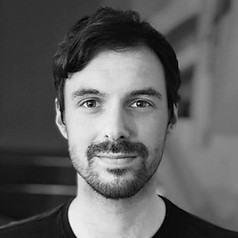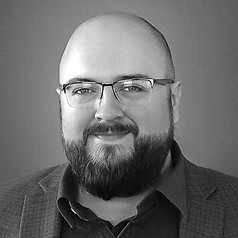THINK
Blind Spots
Most businesses aren’t killed by the things they expect. It’s the things you can’t see – the problems that sneak up on you, that hit you out of nowhere, that only seem obvious in retrospect – that take down even the most dominant market players.
In other words, the biggest risk to most businesses is their executives’ own blind spots.
Every human has blind spots. They’re a part of how our brains work; we are continually selecting a small amount of information to work with out of the overwhelming rush of analog reality. If you don’t know your own blind spots and aren’t designing around them, then you’re betting the future of your company (or your life) on luck. You have better options; the most successful people are the ones who know there are things they’re not seeing, and have a plan to deal with it.
Blind spots are a big topic, so expect more from us on this in the future. Today’s Think piece covers Talentism’s categorization of the main blind spots most people face.
If you have a minute for something fun that may give you a more visceral feeling for blind spots, check out this video and follow the instructions.
Types of Blindspots
Note: The blind spots below are organized roughly in terms of how difficult they are to overcome
Knowledge – You don’t know that you don’t know something. Someone you trust alerts you to the absence of relevant knowledge, and then you learn it. You learn it and the blindspot is gone.
Perspectival – From where you stand, you think you have the right view. But you are missing a lot of information. By taking different perspectives, you can see new things and potentially overcome the blind spot.
Attentional – You are focused on the wrong thing, often due to goal confusion. Leaders create attentional blindspots all the time by giving ambiguous or confusing instructions, so leader goal confusion causes downstream goal confusion. People think they are looking at the right thing (often because it’s what the leader said to look at), but there’s something else more relevant to achieving your goals that you’re not seeing. The thing is right in front of you, but you can’t see it because you are looking at something else. Overcoming attentional blind spots requires getting clear on goals, and tracking for the information most relevant to achieving them.
Habitual – Similar to attentional, but more sustained as your “go to” way of looking at the world. It may be something you’re trained in — e.g. the aphorism that to someone with a hammer every problem looks like a nail, or simply a pattern of thought you’ve been rewarded for in the past. You can train an autopilot to “get above” these habits, which is in effect habitual reflection / self-awareness.
Cognitive – Unconscious biases arising from your brain’s need to organize information efficiently. There are a ton of them (you can find a good list here, and expect another Sensemaker on this topic in the future). This is more about the mechanics of consciousness than a learned behavior. But you can learn behaviors to overcome them. An excellent coach or manager learns these biases, looks for them, and then calls them out, wondering aloud, “Is this recency bias? This bad thing just happened, and now you think bad things are always going to happen?”
Motivational – You say you want something but you really want another (we discussed this in more depth in last week’s Sensemaker here). This is a form of confusion where you have convinced yourself you want one thing, but your behaviors consistently exhibit that you are seeking something else, also known as rational / emotional misalignment. It causes perpetual frustration because people keep wondering why they aren’t getting what they want, when the real problem is they are getting exactly what they want. But they can’t see that that is what they actually want. The goal confusion arises from a gap between the result and the intentional goals. Designing around motivational blind spots requires aligning one’s role to focus on goals that are emotionally resonant, working in a context that provides enough safety to focus on intentional goals (rather than protecting oneself), and finding ways to satisfy the underlying protection goals as they occur.
Emotional – This is the most challenging type of blind spot. The pain associated with something is so great that you CAN’T go there. The worst emotional blindspot is not wanting to admit an error or problem. This blind spot leads to an inability to deal effectively with any / all the other blind spots: The pain of something that hurts you, is bad for you, or prevents you from getting what you want is preferable to the pain of letting go of the familiar, or the fear of the unknown. Designing around emotional blind spots is challenging and may require therapy or other forms of deeper intervention. However, being aware that it exists can offer opportunities to focus on one’s intentional goals in ways that allow for taking on smaller bites of the emotional blind spot a bit at a time, and set up support structures / role designs that limit the damage.
REFLECT
- What assumptions are core to the success of your current strategy?
-
Where do those assumptions come from? What lessons are you applying?
-
What information or knowledge are you missing to know if those assumptions are correct?
-
How many good reasons can you come up with that those assumptions may be wrong?
-
What would it mean about you or the world if those assumptions turned out to be wrong?
-
Reflect on the above prompt at both a cognitive and emotional level; what feelings (especially fear) come up when you imagine they might be wrong?
-
What assumptions have you been most wrong about in the past?
-
How do your current assumptions look in light of the wrong assumptions you’ve made before?
TRY
- Write down the core assumptions from the reflections above
-
Over the next two weeks, try the following:
-
Seeking out information that disproves those assumptions. This could be research, check-ins with reports or other executives, etc.
-
Tracking evidence in the flow of day-to-day work that contradicts those assumptions
-
-
At the end of the tracking period, consider your assumptions. What did you learn? What might you want to modify? What *new* assumptions are you creating in the act of questioning your old ones?




